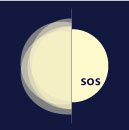|
|
 |
 |
Abstract Review
 Corresponding Author Corresponding Author |
|
|
 |
 Authors Authors |
| Name |  | Affiliation |
|
Darielle Dexheimer |
 |
Boeing-LTS |
|
Barbara Landesman |
 |
Lockheed Martin Space Systems Company |
|
 |
 Abstract Abstract |
| Session |  | 1 (Instrumentation and observations to quantify the magnitude and distribution of atmospheric optical turbulence.) |
| Title |  | 'Characterization of Atmospheric Optical Turbulence along Two Horizontal Paths and Comparison with Vertical Path Turbulence
' |
| Abstract |  | Atmospheric turbulence data along one mile (Path 1) and two mile (Path 2) horizontal paths have been collected with scintillometers at the Air Force Research Laboratory Starfire Optical Range (SOR) in Albuquerque, New Mexico. The data along Path 1 were collected with a Long Baseline Optical Anemometer & Turbulence Sensor (LOA) manufactured by Optical Scientific Inc. (OSI), and the data along Path 2 were collected with a Scintec Boundary Layer Scintillometer (BLS900). Data from Path 1 have been collected continuously on a 24/7 basis since March 2003. The Path 2 scintillometer data have been collected continuously from November 2005 – April 2006. Scintillometers are optical instruments that calculate path average Cn2 from the intensity fluctuations of a light source as a function of time. Solar radiation (heat flux), wind speed, wind direction, and temperature within the boundary layer have a direct influence on atmospheric turbulence, therefore diurnal and seasonal variations of Cn2 are expected. From the Path 1 and Path 2 Cn2, Fried’s coherence length, r0, and isoplanatic angle, θ0 scaled to 500nm were derived. A two-dimensional contour representation of a bivariate normal distribution for the natural logarithm of atmospheric parameters of r0, and θ0, the isoplanatic angle were then created. Comparison of the horizontal path statistics to vertical path statistics made with a DIMM show the utility of horizontal path testing to simulate ground to space turbulence under certain conditions. The overlay graphically illustrates times during which the horizontal data is a good representation of the vertical turbulence as well as the times during which the opposite is true.
|
|
Return to Program and Events
|
 |
 |
|



